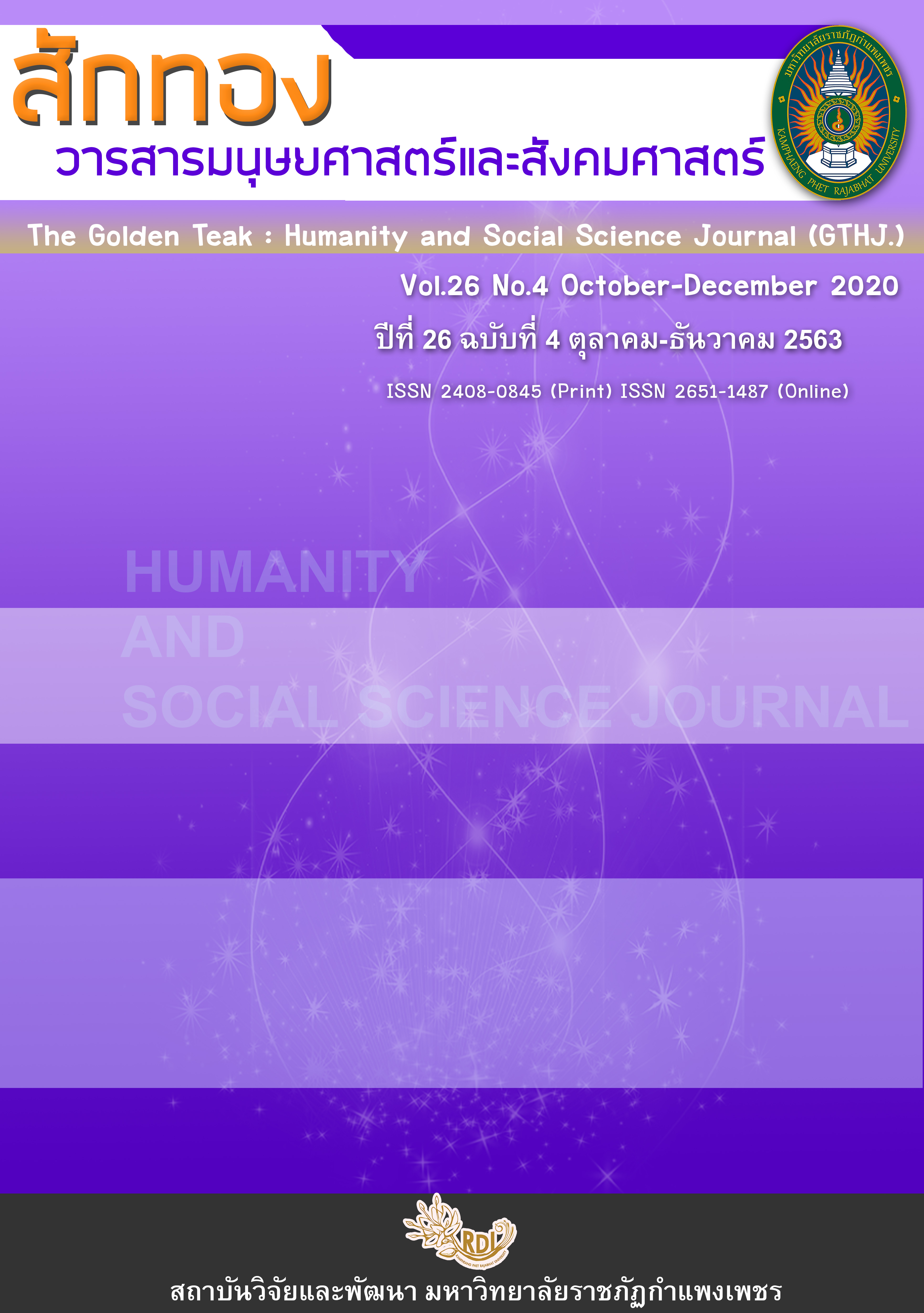A Development of Model Temples on Dhamma Practice
Main Article Content
Abstract
This research article has three objectives: 1) to study the history of the development of prototype temple under the Buddha’s wish in the Buddhist time, 2) to study the process of guidelines for the development of prototype temple under the Buddha’s wish in the Thai society and 3) to present the development of prototype temple under the Buddha’s wish. This is the mixed qualitative research. The data were collected by survey, observation, interview, using study area Data were collected by means of survey, observation and interview in three areas. The result of the research indicated that on according to the history of prototype temple under the Buddha’s wish, it has evolved from the Buddhist era, which is one of the religious bodies being to be the value as the three bases of meritorious action; generosity, morality and mental development of the four assemblies; Bhikkhu, Bhikkuni, Upasaka and Upasika. The temple is homestead, place of worship and various Buddhist religious ceremonies and Dharma practice by 9 prototype temples; Weruwanaram temple, Phrachetawan temple, Bupparam temple, Kositaram temple, Kukkutharam temple, Chiwakampawan temple, Nikrotharam temple, Pa Mahawan temple and Akkhawanchediwihan temple. The process of the development of prototype temple under the Buddha’s wish in the Thai society must is correct, complete according to the rules and regulations, both the principles of discipline and political rules. The Abbot who was govern and manage the temple to be in accordance with the discipline, Sangha rules, associations, rules, regulations and various activities according to the mission of Sangha, which include administration, religion, education, welfare education, propagation, public utility and welfare public. There are 6 ways of recommending to develop the prototype temple under the Buddha’s wish in the Thai society; 1. the arrangement of buildings and temple landscape management, 2. living learning resources management, 3. management of general cultural activities related to Buddhism, 4. management of environment that can speak to facilitate learning, 5. the cultural environmental management and 6. community involvement in various activities for the sake of the Buddhists and the prosperity of Buddhism forever.
Article Details
บทความที่ได้รับการตีพิมพ์เป็นลิขสิทธิ์ของวารสาร สักทอง : วารสารมนุษยศาสตร์และสังคมศาสตร์ สถาบันวิจัยและพัฒนา มหาวิทยาลับราชภัฏกำแพงเพชร
ข้อคิดเห็นใดๆ ที่ปรากฎในวารสารเป็นวรรณกรรมของผู้เขียนโดยเฉพาะ ซึ่งมหาวิทยาลัยราชภัฏกำแพงเพชรและบรรณาธิการไม่จำเป็นต้องเห็นด้วย
References
Bangkok : Faculty of Public Administration National Institute of Development
Administration.
Department of Religious Affairs, Ministry of Education. (1995). Handbook of Sangha Education
Administration. Bangkok : Department of Religious Affairs.
Division of Buddhism, National Buddhism Office. (2011). Guide for developing measure
towards standardization. Bangkok : National Buddhism Office.
Mahachulalongkornrajavidyalaya. (1996). Thai Tipitaka. Bangkok : Mahachulalongkorn
Rajavidyalaya University.
Mataeng, C. (2011). Learning the culture: landscape and places of worship
Nonthaburi. A Dissertation Doctor of Philosophy Cultural Sciences. Graduate
School : Mahasarakham University.
Phradharmakosajarn (Prayoon Dhammajitto). (2006). Buddhist Management Method.
Bangkok : Mahachulalongkornrajavidyalaya University.
The Royal Thai Tipitaka. (1982). Bangkok : Publishing House, Department of Religious Affairs.
Ministry of Education.
Waiwattana, A. (2015). The Development Process of Buddhist Ethical Behavior : A Case
Study of Thai Buddhist Pilgrims at the Four Holy Sites of Buddhism in India and
Nepal. A Dissertation Doctor of Philosophy (Buddhist Studies). Graduate school :
Mahachulalongkornrajavidyalaya University.


